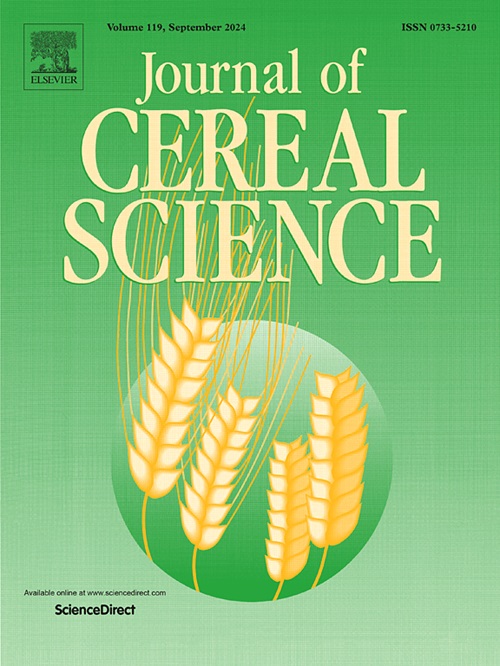Status of processing, nutritional and edible properties of rice after various degree of milling of brown rice
IF 3.7
2区 农林科学
Q2 FOOD SCIENCE & TECHNOLOGY
引用次数: 0
Abstract
This study examined the effect of bran degree (BD) ranging from to 0–10 % on the structural features, processing characteristics and edible quality of the Daohuaxiang paddy variety (Japonica variety). The results demonstrated that as BD decreased, the aleurone layer was destroyed, and the aleurone grains (AG) were flowed out and accumulated on the rice surface. With a decrease in BD, the defective kernels decreased from 33.15 % to 1.00 %, the yellow-colored kernels decreased from 4.50 % to 0.05 %, the fat, protein and fiber contents were reduced by 88.04 %, 15.54 % and 34.48 %, respectively. However, when BD was maintained at 5–10 %, the change in the whole kernels and broken kernels was not significant. When BD ranged from 0 to 7 %, the hardness and cohesiveness of cooked rice exhibited no significant difference, but elasticity and chewiness demonstrated different trends. The taste value of uncooked rice peaked at 4 % BD, whereas the decline in the taste value of cooked rice was more gradual between 2 and 6 % BD. These findings suggest that it is feasible to enhance the nutritional value and improve edible quality by controlling BD, which can provide theoretical support for the production of high value-added rice and reasonably well-milled rice.

糙米经不同程度碾磨后的加工状况、营养及食用特性
研究了稻花香水稻品种(粳稻品种)的麸皮度(BD)在0 ~ 10%范围内对稻花香水稻结构特征、加工特性和食用品质的影响。结果表明,随着BD的减少,糊粉层被破坏,糊粉粒流出并积聚在水稻表面。随着BD的降低,缺陷粒从33.15%下降到1.00%,黄色粒从4.50%下降到0.05%,脂肪、蛋白质和纤维含量分别下降了88.04%、15.54%和34.48%。然而,当BD维持在5 ~ 10%时,全粒和碎粒的变化不显著。当BD为0 ~ 7%时,大米的硬度和黏结性无显著差异,但弹性和咀嚼性有不同的变化趋势。生米的口感值在4% BD时达到峰值,而熟米的口感值在2% ~ 6% BD时下降较为缓慢。上述结果表明,通过控制BD来提高营养价值和改善食用品质是可行的,为生产高附加值大米和精米提供理论支持。
本文章由计算机程序翻译,如有差异,请以英文原文为准。
求助全文
约1分钟内获得全文
求助全文
来源期刊

Journal of Cereal Science
工程技术-食品科技
CiteScore
7.80
自引率
2.60%
发文量
163
审稿时长
38 days
期刊介绍:
The Journal of Cereal Science was established in 1983 to provide an International forum for the publication of original research papers of high standing covering all aspects of cereal science related to the functional and nutritional quality of cereal grains (true cereals - members of the Poaceae family and starchy pseudocereals - members of the Amaranthaceae, Chenopodiaceae and Polygonaceae families) and their products, in relation to the cereals used. The journal also publishes concise and critical review articles appraising the status and future directions of specific areas of cereal science and short communications that present news of important advances in research. The journal aims at topicality and at providing comprehensive coverage of progress in the field.
 求助内容:
求助内容: 应助结果提醒方式:
应助结果提醒方式:


